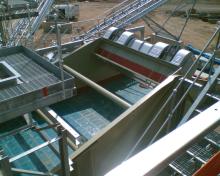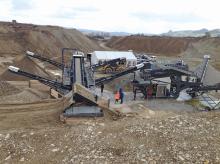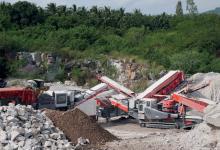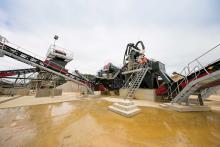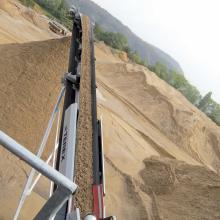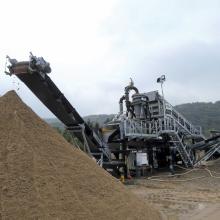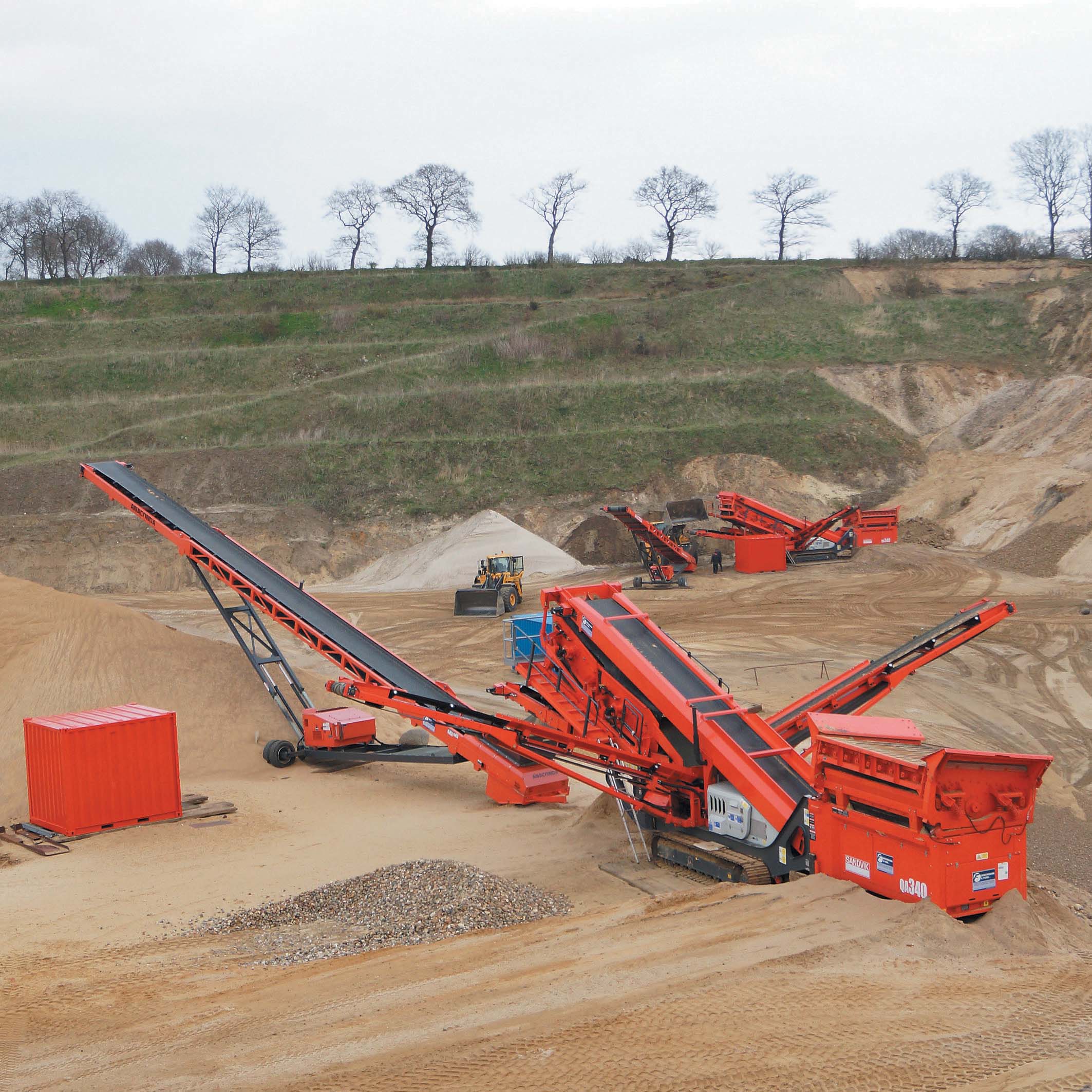
The family-owned company, Kieswerk Lucht, has been quarrying sand and gravel across the north German district of Dithmarschen for over 100 years, with its main operation being located in Buchholz since 1998.
Here over 250,000tonnes of fine sand is produced each year with two
The Buchholz site is now the company’s major sand and gravel operation covering some 13hectares, and with an additional 30hectares of excavation area approved at the site, plus further reserves, the future for the company looks secure.
Now run by the fifth generation of the family, Jens and Reimer Lucht, materials processed at the site are being used as filler throughout the Dithmarschen area, supplied to companies within a 25km radius.
Of the material found at Buchholz only 5% of the standing raw material is gravel, which has proved particularly useful in construction applications as it is nearly completely free of organic contaminates. This has allowed the Lucht operation to be focused on economical dry screening technology, with the main products being unwashed sand fractions of 0/2mm and 0/3mm.
Lucht refrains from further processing of the gravel fraction as the larger uncrushed road gravel screening fractions complement its product range, being further supplemented by externally purchased products, for example sub-base, which is then stored at the Buchholz site.
Mobile plants
The processing of the material is only part of the production requirements, with any movement of material within the site being handled by two 5m³ wheeled loaders, which are used across the various different levels of the quarry. This is an important facet of the operation, as each quarry face can rise up to 6m, while reaching down 25m. The loaders are able to utilise calibrated weighing equipment for use in quarrying, handling and loading, and are assisted by a tracked excavator which is mainly used for slope stabilisation and modelling.
Material production at the site is undertaken by mobile screening plants, with the Lucht operation having realised the advantages to be gained from this processing technology. Initially the company used wheeled equipment, later investing in tracked machinery to allow for easier positioning without additional ground preparation.
Even though the specific screening production requirements at Buchholz are not particularly demanding, plant mobility is essential, as the year-round operation is adjusted to ensure high productivity with most economical results.
The current screening operation at Buchholz is undertaken by the two Sandvik Construction QA340 double-deck Doublescreens, which are able to process 500tonnes/hour of gravel and the 350tonnes/hour of sand, and which are both required in high production peaks.
One QA340 was bought in 2011, with Kieswerk Lucht taking delivery of the second machine at the end of 2012.
Senior member of the family responsible for the business, Reimer Lucht, says that the main reason for buying the QA340s is the patented Doublescreen technology used by the screener. This allows the screening performance of the 27tonne plant to adapt exactly to the given quality and conditions of the raw material.
“Specifically in sand applications the two separate screen boxes, with separate drives, excel with a high acceleration of the material. And according to the material’s condition we can easily adjust the first screen box to a steep angle and get even higher efficiency,” says Reimer.
The QA340’s total screening area measures 5m x 1.5m on both the top and bottom deck, with operational flexibility being maximised through the machine’s ability to change the screening media or to be serviced through the hydraulic raise functions of the main and side fine conveyors.
Lucht’s QA340s currently operate with a 40mm square mesh on the top deck, and a 3mm Harpscreen on the bottom deck, with the vibrating remote controlled double-deck vibrating grid (on both machines) being fitted with a 80mm square mesh on the 7m³ feeder.
The two QA340s produce 350tonnes/hour of sand fractions of 0/2, 2/35 and 35/80mm, and through the use of separate stockpilers, Reimer Lucht is able to “buffer” these high production rates.
Fuel consumption
“At 350tonnes/hour, combined feeding and handling with single wheeled loaders is not economical: the screen runs empty too quickly.”
Thus use of this additional equipment allows for the stockpiling capacity of the end product (0/2mm) to be up to 10,000tonnes being facilitated by the 24m stockpile, which also possesses a discharge height of 10m, and is located at the edge of the 6m face on the lower level.
Lucht says a major additional benefit for its operation has been the improved fuel efficiency derived from the Sandvik screeners.
Reimer Lucht has assessed the long-term average fuel consumption of his Sandvik QA340 to be 15litres/hour approximately for both 75kW plants.
One unit works nearly “stationary” with only two movements/year while the second unit more frequently follows the excavation activities or switches position after a short screening media change, depending on the required production of defined gravel fractions.
“If I additionally calculate the 5litres/hour consumption of the stockpiler against the 20litres/hour of the wheeled loader, my whole operation definitely becomes more efficient,” says Reimer.
Oppermann & Fuss, the Sandvik dealer and service partner, is located in Quickborn, approximately 80km from Buchholz, and the company has forged a five-year partnership with Kieswerk Lucht, which is, according to Reimer Lucht, principally based on the high quality of aftermarket provision.
Key to the high levels of aftermarket customer care is the regular service (or larger repairs) delivered by the mobile Oppermann & Fuss Service operation.
However, more routine maintenance is easily undertaken by Lucht staff as each screener is supplied with its own service container, in Sandvik colours, with all necessary small parts, lubricants, fluids and tools included.

